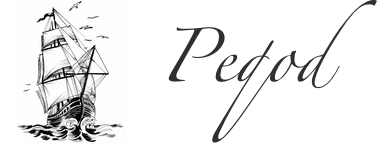ACADEMIC WRITING
This course helps students whose first language is not English develop their academic writing skills. The course covers essay structure, rhetoric, grammatical accuracy, paraphrasing, citing sources, critical thinking, and editing/revising work.
The course is thematic: you will explore different topics and themes (current affairs, social issues, etc.) by reading, listening, and discussing material, and then write essays about that material. The instructors will provide extensive feedback to help you edit and revise your own writing.
- Department: American Language Program
- MTR 9:10 a.m.-11:25 a.m.
-
Instructor:
Barbara Kruchin
Info -
Instructor:
Andrija Matic
Info -
Instructor:
Rainie Zhang
Info - 0 points
UNIVERSITY STUDIES
- Department: General Studies
- T 1:10 p.m.-2:25 p.m.
- W 11:40 a.m.-12:55 p.m.
- R 2:40 p.m.-3:55 p.m.
- F 1:10 p.m.-2:25 p.m.
- 0 points
NEUROLOGY SUBINTERNSHIP
- Department: Neurology
-
Instructor:
Sarita D Martinez
Info - 0 points
Pediatric Emergency Medicine: Ultrasound
Pediatric Emer Med: Ultra
- Department: Emergency Medicine
-
Instructor:
Lauren Perez-Lara
Info - 0 points
SURG: CARDIAC&THORACIC SUBI
- Department: Surgery
-
Instructor:
Sarita D Martinez
Info - 0 points
ACADEMIC WRITING
This course helps students whose first language is not English develop their academic writing skills. The course covers essay structure, rhetoric, grammatical accuracy, paraphrasing, citing sources, critical thinking, and editing/revising work.
The course is thematic: you will explore different topics and themes (current affairs, social issues, etc.) by reading, listening, and discussing material, and then write essays about that material. The instructors will provide extensive feedback to help you edit and revise your own writing.
- Department: American Language Program
- MWR 6:10 p.m.-8:25 p.m.
-
Instructor:
Matthew Morley
Info -
Instructor:
Amable Custodio Ribeiro
Info - 0 points
CHILD ABUSE REPORTING EDUCATION
CHLD ABUSE REPORTING EDUC
The Child Abuse Reporting Education (CARE) Project is an online resource designed to teach graduate students in the Columbia University School of Social Work and the College of Dental Medicine how to recognize the symptoms of child abuse and how to report abuse when acting in their professional capacities.
The Child Abuse Reporting Education (CARE) online training. CARE is a mandatory requirement to graduate. It will take you approximately 60 minutes. Social Workers have the responsibility as mandated reporters of child abuse.
- Department: Social Work
-
Instructor:
Richard T Hara
Info - 0 points
NEUROLOGY:CRITICAL CARE SUBI
- Department: Neurology
-
Instructor:
Sarita D Martinez
Info - 0 points
MOTIVATIONAL INTERVIEWING LAB
The skills-based lab is a 7-week “hands-on” training for all students enrolled in Foundation Year Field. The aim of the lab is to equip social work students with universal engagement and communication skills to support both professional development in the field and personal growth. The lab is designed to be highly interactive, with a strong emphasis on “experiential learning” through role/real play and ongoing feedback. The lab is led by certified skills-based lab instructors, who serve as facilitators in the process of student learning and practice.
- Department: Social Work
-
Instructor:
Andrew Hamid
Info - 0 points
MOTIVATIONAL INTERVIEWING LAB
The skills-based lab is a 7-week “hands-on” training for all students enrolled in Foundation Year Field. The aim of the lab is to equip social work students with universal engagement and communication skills to support both professional development in the field and personal growth. The lab is designed to be highly interactive, with a strong emphasis on “experiential learning” through role/real play and ongoing feedback. The lab is led by certified skills-based lab instructors, who serve as facilitators in the process of student learning and practice.
- Department: Social Work
- M 6:20 p.m.-8:10 p.m.
-
Instructor:
Andrew Hamid
Info - 0 points
Economics Lecture
How a market economy determines the relative prices of goods, factors of production, and the allocation of resources and the circumstances under which it does it efficiently. Why such an economy has fluctuations and how they may becontrolled.
- Department: OFFC OF THE REGISTRAR
- W 9 a.m.-10:15 a.m.
- 3-6 points
TEST COURSE
- Department: OFFC OF THE REGISTRAR
-
Instructor:
Charlot Ms Jenkins
Info - 3 points
PSYCH:INPATNT TRTMNT IN RSRCH
- Department: Psychiatry
-
Instructor:
Sarita D Martinez
Info - 0 points
1 Residence Unit-Climate School
1 RU Climate School
1 RU Full Time Enrollment in the Climate School
- Department: Climate School
-
Instructor:
Cari E Shimkus
Info - 0 points
AMER 12 PT PROG INTENSIVE
- Department: American Language Program
- F 2:10 p.m.-5 p.m.
- F 10:10 a.m.-1 p.m.
- R 2:10 p.m.-5 p.m.
- 0 points
1/2 RU Climate School
1/2 RU tuition for Climate School students
- Department: Climate School
-
Instructor:
Cari E Shimkus
Info - 0 points
MEDICINE:HOSPITALIST SUBI
- Department: Medicine
-
Instructor:
Sarita D Martinez
Info - 0 points
Science Honors Program
Dummy registration for Science Honors Program. Not an official course registration.
- Department: Engineering
- 0 points
Extended Residence Climate School
Extended Residence CLIM
Extended Residence enrollment category for Climate School students.
- Department: Climate School
-
Instructor:
Cari E Shimkus
Info - 0 points
CARDIAC INTNSVE CARE SUB-I
- Department: Medicine
-
Instructor:
Sarita D Martinez
Info - 0 points
Emergency Psychiatry SubInternship
- Department: Psychiatry
-
Instructor:
Sarita D Martinez
Info - 0 points
MEDICINE:PALLIATIVE INPATIENT
- Department: Medicine
-
Instructor:
Sarita D Martinez
Info - 0 points
